Analysis: Will Hardy’s coaching style has helped lay a foundation for the Jazz’s future

During the Utah Jazz’s four-day gameless stretch leading up to Saturday’s bout against the Boston Celtics, a couple of Jazz players approached head coach Will Hardy and advocated in favor of trying to work a little more zone defense into the final stretch of games.
The Jazz had toyed with the zone a little bit earlier in the season, but hadn’t had a ton of success with it. Most memorably the Jazz were kind of spiraling against the Detroit Pistons back in December when they were in zone. At halftime that night, the players said they’d rather finish the game out playing man defense, pretty intensely advocating against the zone.
But, when two players that Hardy trusts very much approached him about trying it out again, he was willing to try it.
The Jazz’s ‘Senior Council’ asks for more zone
“I was talked into bringing it back and giving it some more love by a couple of Senior Council members on the team,” Hardy said. “So we decided to bring it back and work on it some more. We worked on it the last couple days of practice and thought it’d be a fun opportunity to try to bring it out.”
The Jazz used a varied version of a 1-3-1 zone with a ton of switching and some double-teaming to help keep the Celtics from finding a good rhythm. Part of the goal was to keep Jayson Tatum out of the game as much as possible — close him off, deny him, put pressure on him. Tatum ended up going 4 of 12 on the night, and the fact that he only took 12 shots, when he averages 21.4 attempts per game, was proof enough for Hardy that the Jazz’s zone was working.
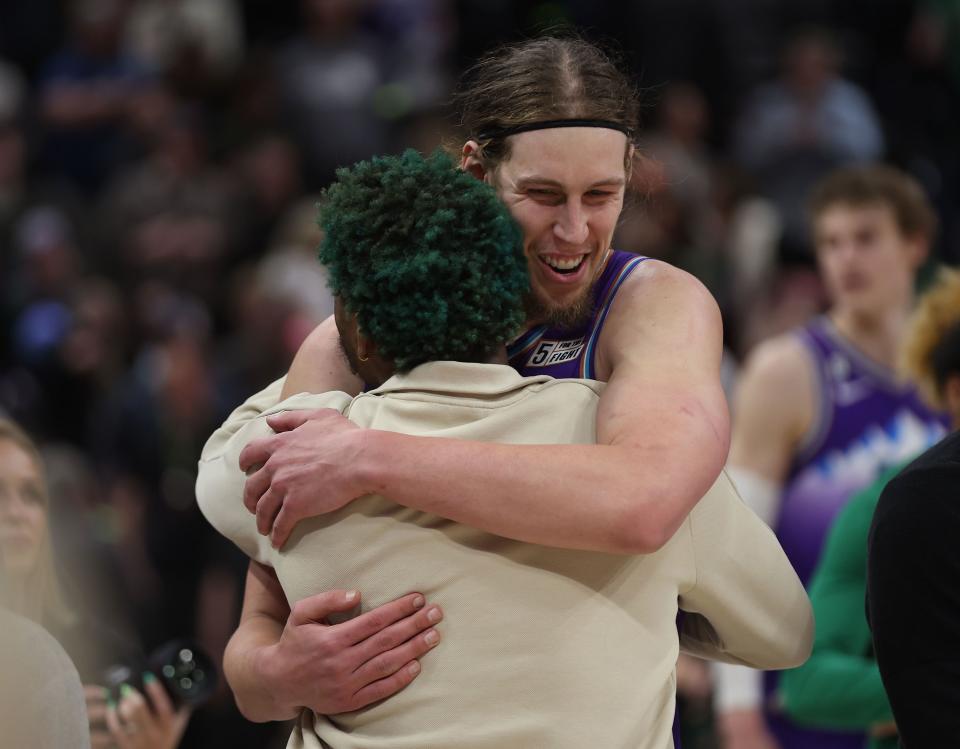
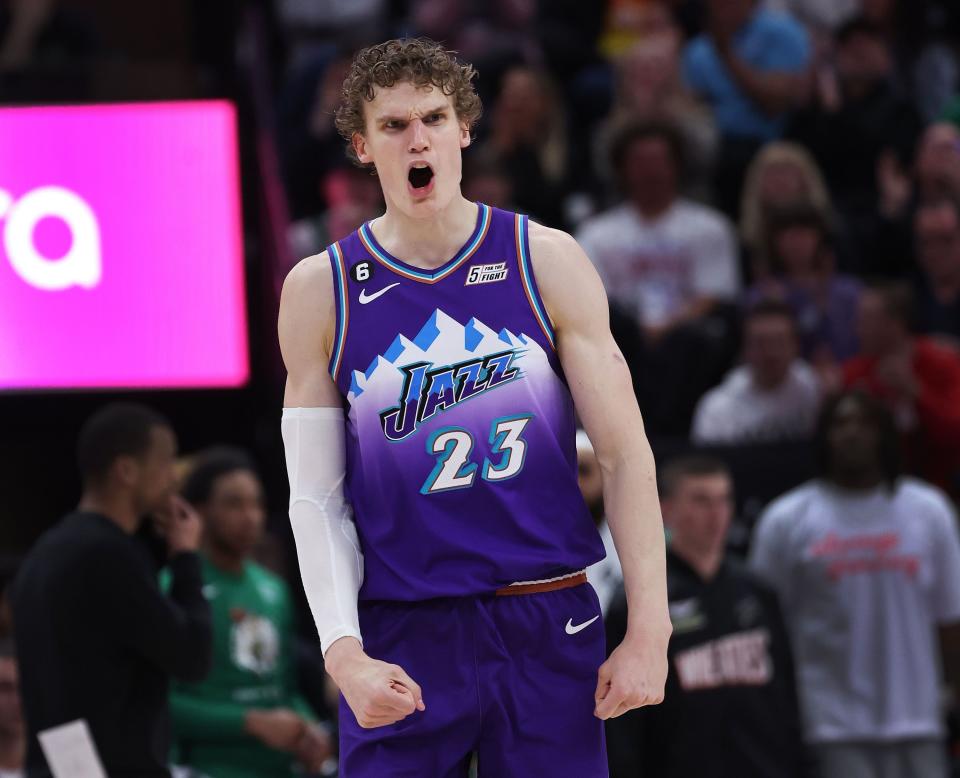

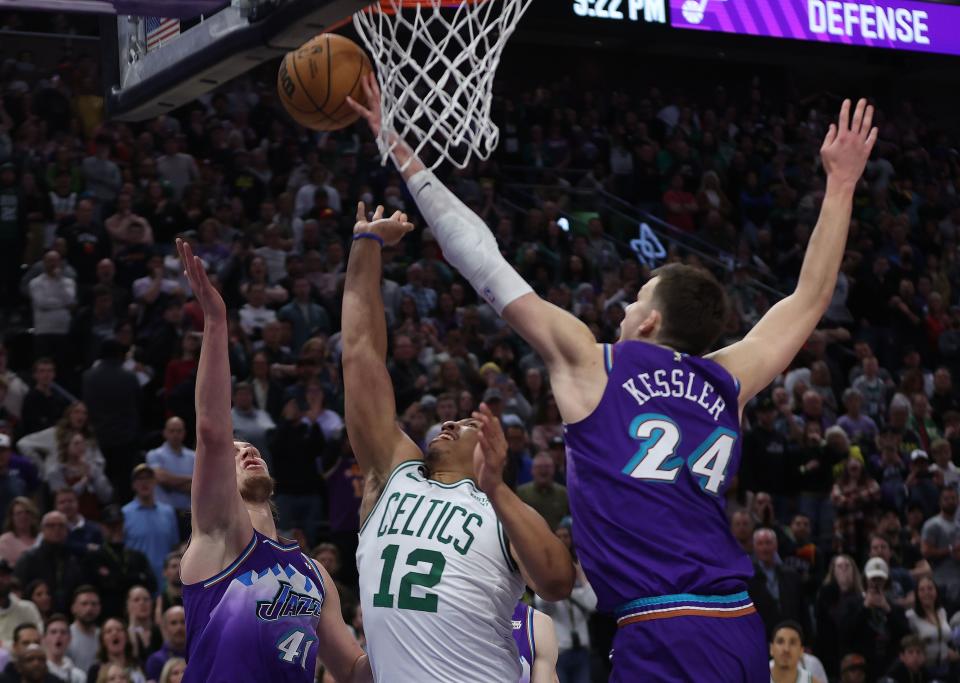


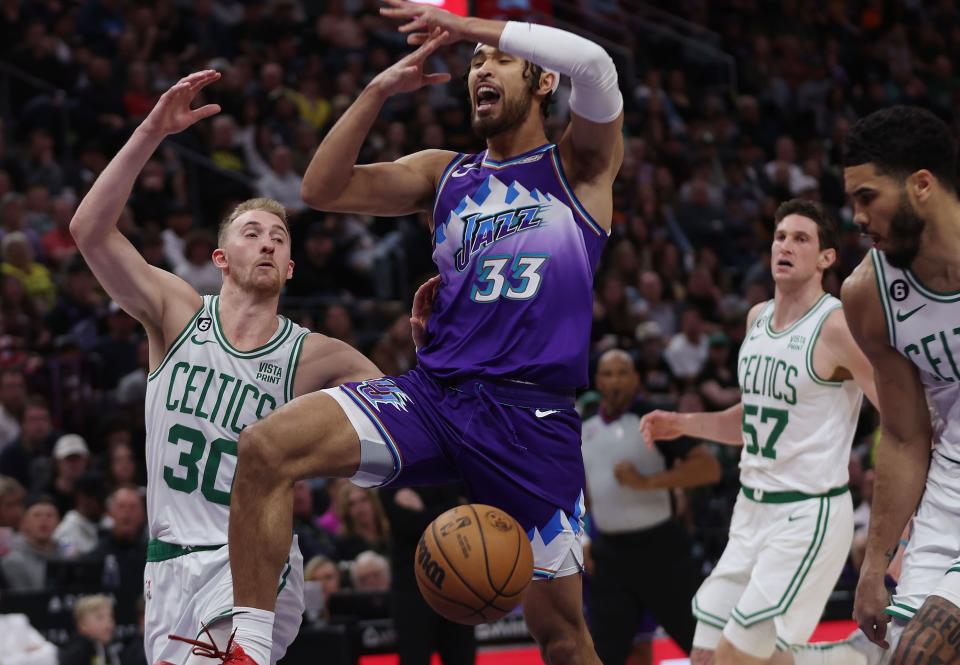

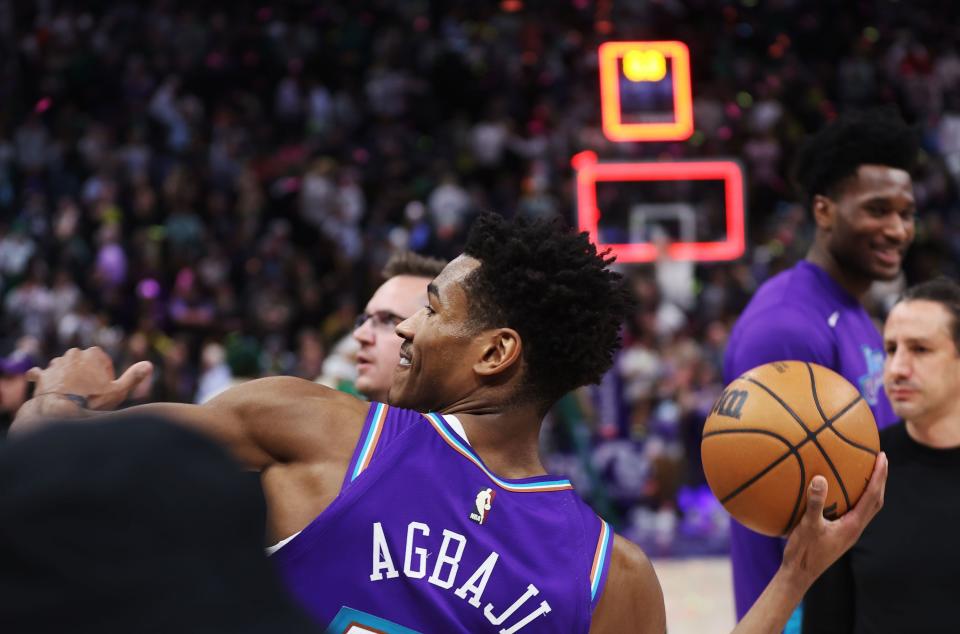


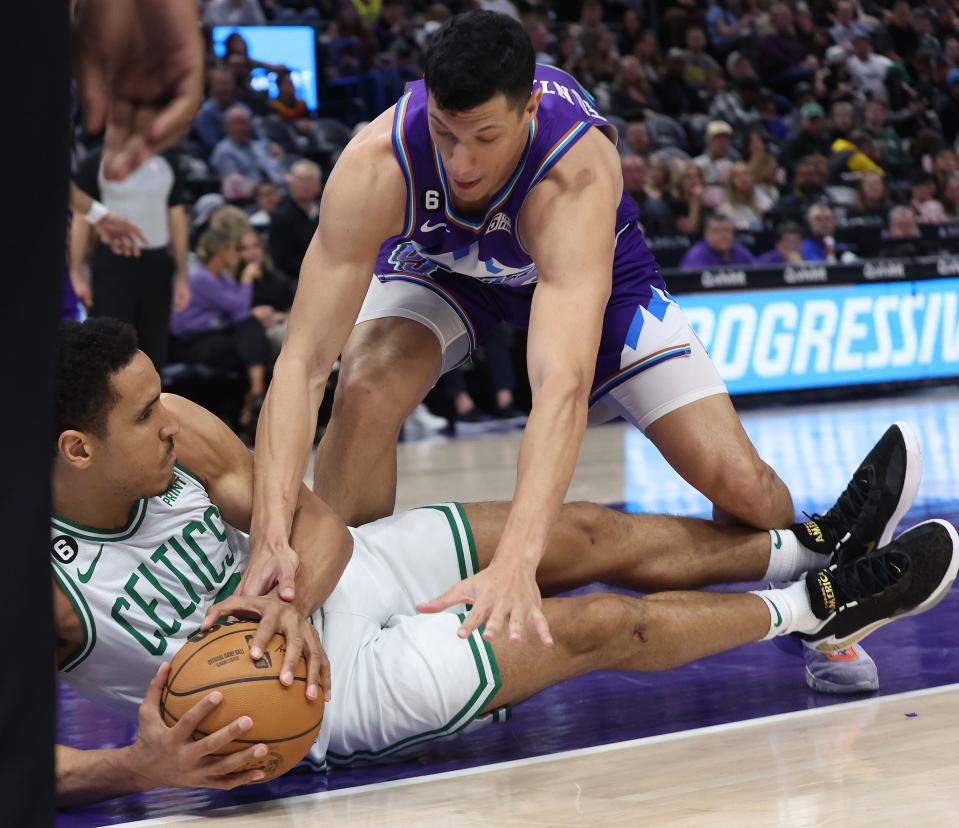
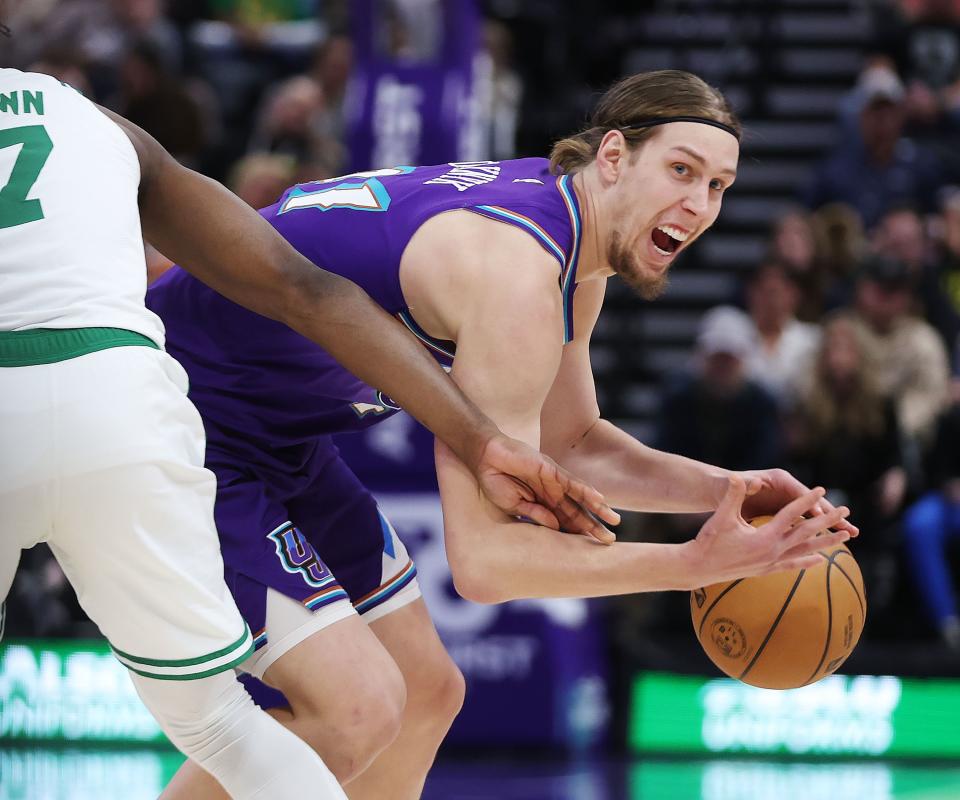
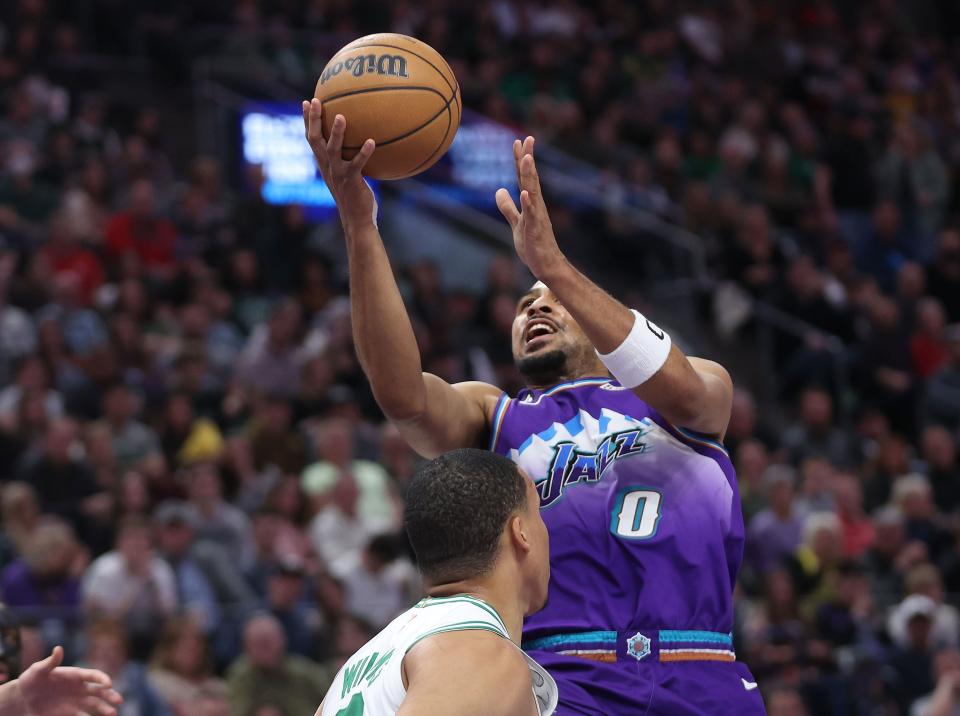


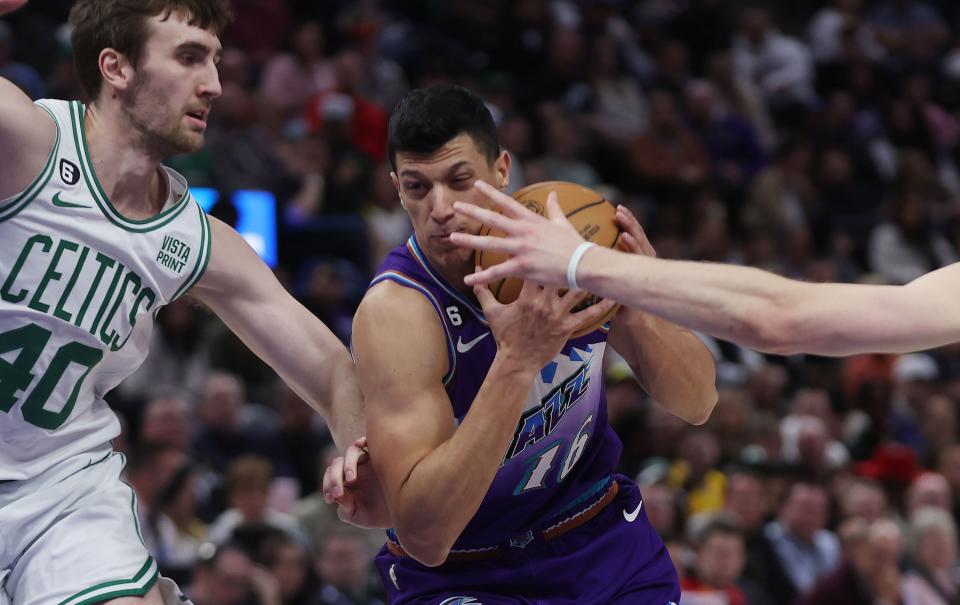
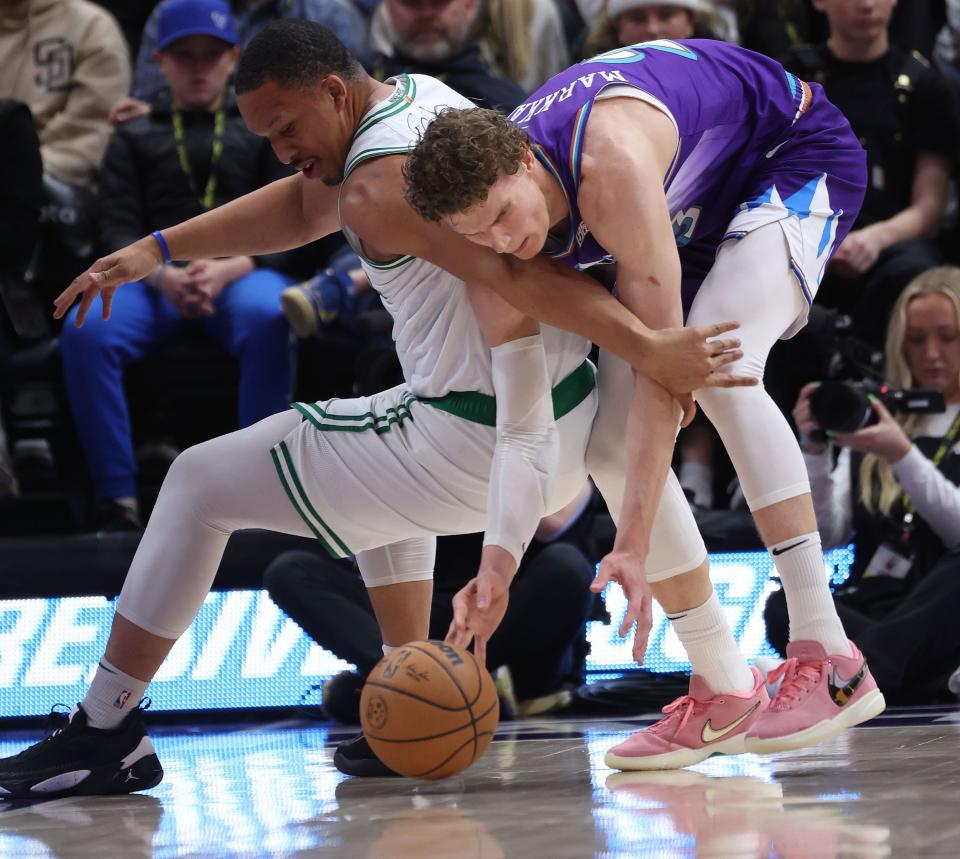

Maybe when the Jazz are playing in higher stakes games I’ll think about the actual mechanics of the zone, but right now, what I am really impressed with is the openness of Hardy and how he really values the feedback of the players and wants their input.
So who are these “Senior Council” players that were able to convince Hardy to bring back the zone?
“One of them wears a backwards hat a lot,” Hardy said. “And the other one is from Finland.”
So Kelly Olynyk and Lauri Markkanen were interested in trying something new and Hardy didn’t hem and haw, but instead took what two of his best players were suggesting and made it a pretty big part of their upcoming game plan.
“He’s awesome,” Olynyk said of their first-year coach. “He’s super open minded, he’s an outside-the-box thinker and loves that kind of stuff and all the different opportunities and possibilities. I think he’s someone who you can approach and he’ll really take your suggestions into consideration. You know, sometimes you go to a restaurant and you see a suggestion box and you never really know if those get read, but he’ll read every one of them. Gotta love it.”
Related
Taking chances
That openness and the want for there to be endless possibilities and to see all the ways his players can flourish doesn’t just show up in specifically schemed and planned things like a zone defense.
Hardy wants his young players like Ochai Agbaji and Walker Kessler to really allow themselves to play freely. Of course there are times when he wants them playing within the system and to stick to certain principles, but he also is interested in seeing what it looks like when Agbaji allows himself to try new things, or when Kessler plays outside the box a little bit.
Hardy wants his players to take chances, because if they don’t take chances and try to push the envelope a little bit, maybe they don’t realize their full potential and then maybe Hardy doesn’t know all the ways that he can use them in the future.
Hardy is open to suggestions, to his players making mistakes, to successes and failures, so long as they are all done with the right approach and with the attitude of someone trying to win.
That builds confidence in young players so that Agbaji can do things like hit a big-time 3-pointer in a close game or Kessler to block a game-winning shot attempt by a player who has NBA Finals experience. Those are both things that happened on Saturday night and it all culminated in the Jazz beating the Celtics, 118-117.
As we near the end of this season, it’s worth looking at the reasons that the Jazz have been successful in developing a strong foundation for the future and it’s worth pointing out that Hardy’s coaching and his openness as a coach has really been a big part of that.

